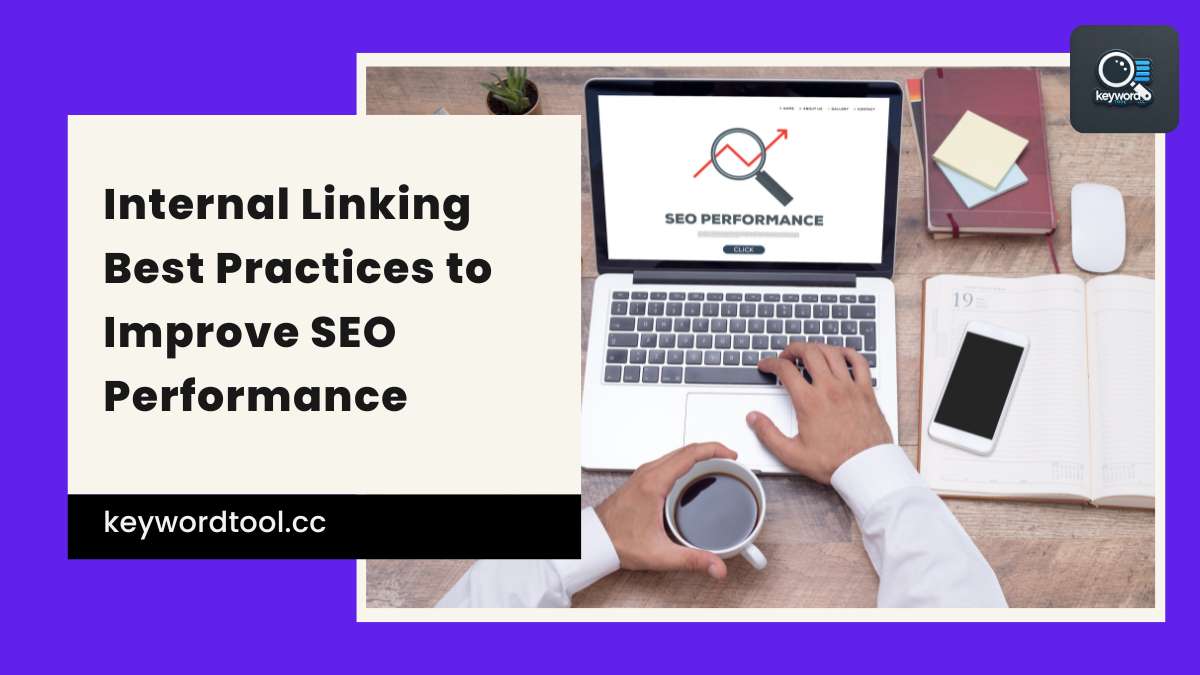Most people slap links on a page and hope for the best. That’s not strategy—it’s guesswork. If you’re serious about ranking, you need a system that actually helps search engines and users move through your site with purpose. Internal linking best practices aren’t about stuffing pages with random blue text—they’re about building real structure, showing Google what matters, and giving each page a fair shot at visibility. Whether you’re juggling multilingual sites or just trying to prove your SEO is working, solid internal links make all the difference. Let’s cut the fluff and get into what actually works.
Use Descriptive Anchor Text
Slapping “click here” on a link doesn’t cut it. Not for people, not for search engines. If you’re serious about improving your site structure and rankings, your anchor text has to mean something. It has to tell the reader — and Google — what’s behind that link before they even click.
Let’s say you have a page about keyword research tools. Linking with vague words like “read more” or “this article” gives zero context. Instead, go with anchor text like best keyword research tools or how to choose SEO keywords. That way, you’re handing out clear signals about the destination.
This isn’t just some optional tip—it’s one of the internal linking best practices that actually moves the needle. Search engines use this text as part of how they understand your content structure and hierarchy. The clearer your links, the easier it is for crawlers to figure out what pages matter most.
Users benefit too. Most folks skim through content fast. They don’t want surprises when clicking a link—they want confidence in where it’s going to take them. Descriptive anchor text builds that trust without wasting anyone’s time.
Now if you’re juggling sites in multiple languages or trying to rank across different countries, clarity gets even more important. You need every internal signal working in sync so nothing gets lost between versions of your pages.
Want help getting sharper with this? The 14-day guided SEO challenge walks you through stuff like this step by step — including how to pick better anchor phrases based on real search behavior and intent analysis. You’ll not only get smarter at writing links but also start thinking like someone who does this full-time.
Solid internal links don’t just exist—they’re built with purpose from the ground up using smart details like these.
Link to High-Value Pages
Pointless links won’t get you anywhere. If you’re putting in the effort to build internal links, make them count. Focus on linking to high-value pages—those that actually do something for your site. We’re talking cornerstone content, landing pages that convert, or posts that consistently bring in traffic. These aren’t just any URLs floating around your domain. They drive results.
When building out your internal structure, don’t scatter links randomly across blog posts or product descriptions. That’s noise. Instead, link with intent. Ask yourself: which page deserves more traffic? Which one helps users solve a problem or take action? Directing internal links toward these key assets gives them more weight in search engines and makes it easier for visitors to find what matters.
This is where internal linking best practices come into play—not as theory but as action steps you can apply right now. You’re not just feeding Google bots; you’re guiding real people through your site with purpose. The more relevant paths leading to high-priority pages, the better their chances of ranking higher and converting better.
If you’re unsure which of your pages qualify as “high-value,” start by checking performance metrics like bounce rate, time on page, conversions, and backlinks earned over time. Those numbers show what’s working already—now give those pages even more support internally.
Need help figuring this stuff out without wasting hours guessing? The 14-day guided SEO challenge offers a clear path forward using tools built for this job—plus expert advice so you don’t have to wing it alone.
Smart internal linking isn’t about volume—it’s about strategy. Link with direction and stop letting strong content hide behind weak navigation choices.
Follow Internal Linking Best Practices Consistently
Keep your internal links tight. Don’t just link for the sake of linking. Every single one needs to serve a clear purpose—either guiding users or helping search engines understand your content better. Random links won’t help you. They confuse crawlers and frustrate visitors. So, skip the guesswork and set up a system you can follow across all pages.
Start by organizing your site in a way that makes sense. Group related topics together and connect them with relevant anchors. Make sure each link points to something useful, not filler or outdated content. If a page no longer adds value, remove its links or update them to something stronger.
Stick to internal linking best practices across every language version of your site if you’re managing multilingual SEO. That means keeping structure consistent and ensuring localized pages get equal attention when it comes to interlinking.
Avoid overdoing it with too many links on one page—especially in the main content area. Too much clutter weakens impact and confuses both readers and bots. Aim for clarity instead of volume.
Don’t forget about orphan pages either—those that have no internal links pointing to them at all. These dead-end spots get ignored by crawlers unless they’re tied back into the overall structure through smart linking choices.
If this sounds like too much trial-and-error, there’s another way to sharpen your skills fast: Start the 14-day guided SEO challenge. It walks you through real steps using actual tools so you can practice building strong internal connections while seeing immediate results on live pages.
Consistency is what separates messy sites from those that rank well long-term. Once you’ve got a working method, apply it everywhere—from blog posts to product pages—and review often as new content gets added or removed.
A reliable approach keeps things simple when reporting results or scaling strategies across different regions or campaigns without losing control of structure or performance flow.
Keep Your Links Natural and User-Focused
Internal links should never feel forced. If they look like they were dropped just to please a search engine, people will ignore them—or worse, bounce off your page. That’s not what you want. You want readers to click because the link actually helps them.
Start by thinking about where someone might want to go next while reading your content. Ask yourself: what would make sense for them? Link only when it adds value or gives more context. Don’t stuff ten links into one paragraph just to tick an SEO box.
Use anchor text that tells people exactly what they’ll get if they click. Skip vague phrases like “click here” or “read more.” Instead, use short phrases that describe the linked content in clear terms. Make sure those words fit naturally in your sentences—don’t break flow just to squeeze in a keyword.
Also, don’t overload pages with too many internal links pointing to the same place. It’s not helpful and can mess with both user experience and crawl efficiency. Spread out your links across different posts and sections of your site.
Following internal linking best practices means putting real users first—not algorithms. This doesn’t mean ignoring SEO—it means doing it right so it works long-term without annoying visitors or hurting engagement rates.
If you’re trying to figure out how all this fits into a bigger strategy, there’s solid support available for that kind of hands-on learning. The 14-day guided SEO challenge walks you through building actual skills using proven tools and expert advice—not theory, but action steps you apply on real pages.
Want help making smarter linking decisions while also improving rankings? Start the challenge now—it’s free and built for people who need results fast without wasting time guessing what works.
Let every link earn its spot by being useful, not decorative—that’s how trust builds over time and rankings follow naturally from there.
The True Power of Your Site’s Architecture
If you’re serious about dominating search results, internal linking best practices aren’t optional—they’re your secret weapon. From using descriptive anchor text to spotlighting high-value pages, every link you place should serve a purpose and enhance user experience. Consistency is key, but so is keeping it human—search engines love structure, but users drive conversions. Ready to put this into action? Join the 14-day guided SEO challenge and learn how to apply these tactics hands-on. It’s your chance to think like an SEO rebel and finally make your site architecture pull its weight in rankings.









